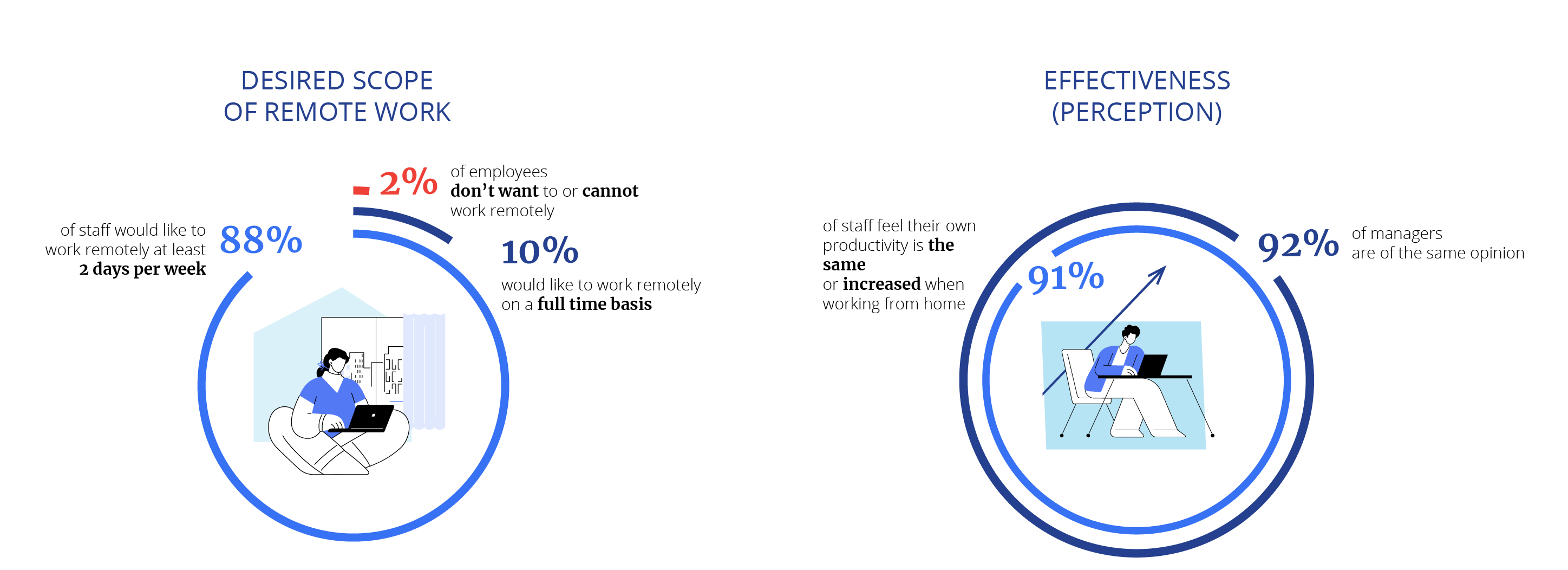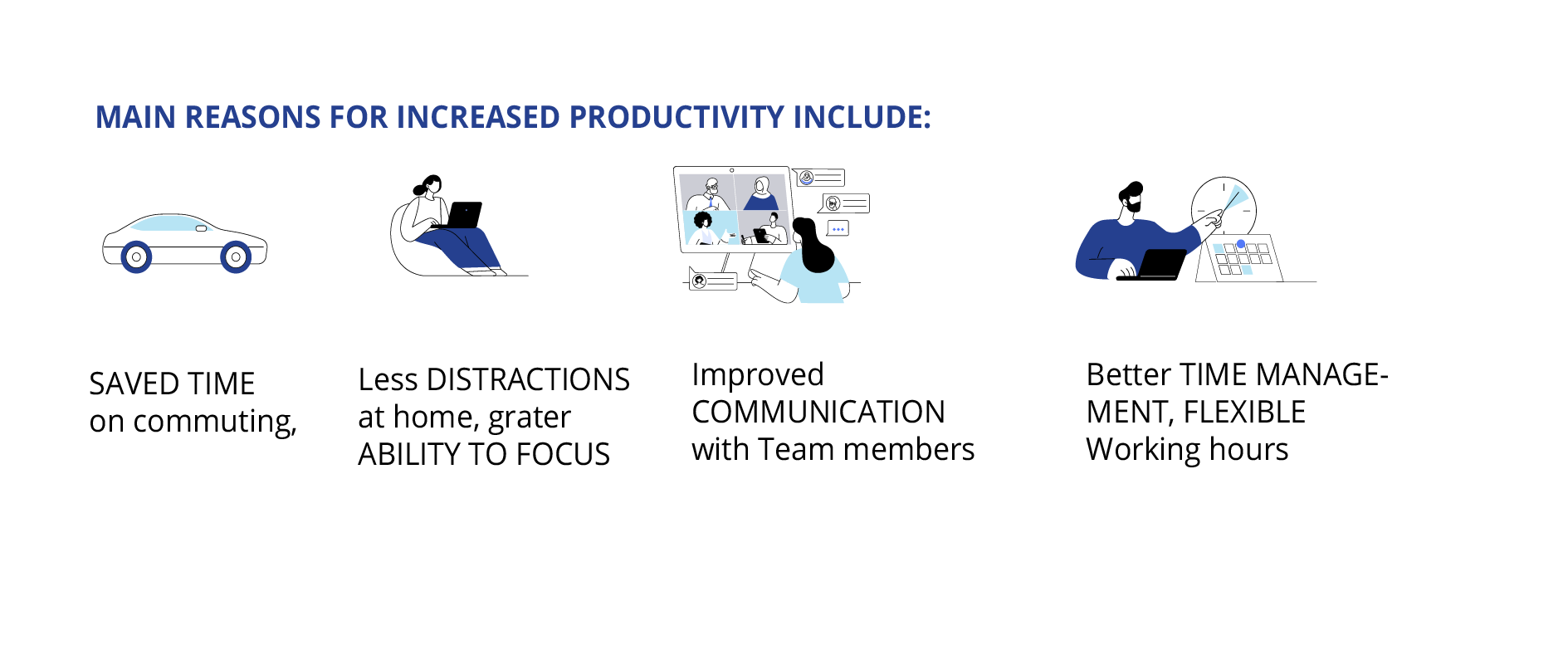Case study | Transforming the Work Model in a Major Pharmaceutical Company
This case study delves into the process of transforming the work model within one of Poland’s largest pharmaceutical companies. Like in many other organizations, this transformation was triggered by the shifts catalyzed by the Covid-19 pandemic.
Evolution of the Work Model
Before 2020, the company adhered to the conventional office-centric work model. Remote work was occasionally permitted, limited to exceptional cases defined through ad hoc agreements with team managers.
The lockdown and the rapid implementation of company-wide remote work highlighted the necessity for a more flexible approach, prompting discussions about adopting a hybrid work model – in line with staff expectations. A survey indicated that 88% of employees favored the option of remote work for at least 2 days a week, with nearly 40% considering 4 or more days optimal.
Concerns of Management and the Board
Despite employee enthusiasm, management expressed concerns that the hybrid model might negatively affect long-term company performance. The situation was further complicated by the conservative stance of the supervisory board, which believed that the return to a solely office-based mode was inevitable post-pandemic.
Internal Disparities and Polarization
Moreover, significant polarization existed within the management team. Some advocated a stringent approach, emphasizing the necessity of closely overseeing their teams’ work. Conversely, others regarded remote work as indispensable. The characteristics of the teams also varied considerably -– from those reliant on daily access to specialized equipment and headquarters-based laboratories, to highly mobile departments or those involved in tasks demanding focus, for which the ability to work remotely was crucial. These disparities significantly complicated the decision-making process.
Numerous executives, including those from HR, also feared that an overly restrictive policy could lead to top talent departing for competitors that touted their flexible approach to work models on social media.
Decision-Making Process
Facing the challenge of making a pivotal decision that would significantly impact the organization, the company initiated a comprehensive process involving needs analysis and strategic work model formulation.
Colliers Define were engaged to support the decision-makers in this process. Given the nature of the challenge, a thorough examination of both employees’ perspectives and business aspects was essential. The process revolved around regular meetings and discussions among senior management, each representing a specific business line. These deliberations and decisions were based on data regarding employee needs, gathered through methods such as surveys, interviews, and focus groups. This data, encompassing work styles, preferences, and attitudes toward remote work, was further augmented by direct consultations between the heads of business lines and their teams. This comprehensive data formed the foundation for decisions regarding the future work model.
Implemented Solutions
As a result of this process, the main user profiles were defined, along with which functions or teams fit into each profile:
Digital Nomad
People working entirely remote or regularly moving between…People working entirely remote or regularly moving between the company’s numerous locations throughout the country due to their job nature. It encompassed about 5% of employees.
Office Anchor
Individuals for whom the office was the primary work location – representing…Individuals for whom the office was the primary work location – representing approximately 20% of the company’s workforce. This category included those reliant on specialized office equipment or engaged in supporting colleagues who used the office.
Flex Collaborator
People working in a 2/3 or 3/2 system – was the most numerous and included…People working in a 2/3 or 3/2 system – was the most numerous and included about 75% of the company’s employees.
Three office attendance coordination approaches were also identified:
- Office-only – designed for those present in the office daily, with permanently assigned workstations.
- Fixed-hybrid – tailored for individuals adhering to a fixed hybrid rhythm. Teams or individuals adhered to a schedule negotiated with their supervisor, utilizing reserved team areas on rotation.
- Flex-hybrid – offering maximal flexibility, enabling bottom-up coordination of office attendance and shared hot desk usage.
The latter two variants were accessible to representatives of the Flex Collaborator and Digital Nomad profiles, with the final choice subject to consultation with the team leader.
The essence of the process was the dialogue with employees and the discussion and search for consensus among a group of managers with very different views. It was particularly valuable that even the proponents of a restrictive and controlling approach engaged in dialogue with their employees about how to reconcile their needs and preferences, with the needs of the business.
Another valuable outcome was the realization that defining and implementing hybrid work principles marked only the beginning of the journey and that. continued dialogue with employees as well as monitoring the impact of implemented solutions on the organization’s performance were equally vital.
Conclusions
The process facilitated by Colliers Define led to the development of a new work model that balanced employee preferences with business and team perspectives. The outcome encompassed not only work model recommendations but also the implementation of technologies to manage office presence. This initiative also led to guidelines for office space reconfiguration, enabling its alignment with hybrid teams’ needs. Rooting the decision in robust data facilitated discussions with the conservative supervisory board and paved the way for ongoing action and monitoring the effects of the implemented changes.



